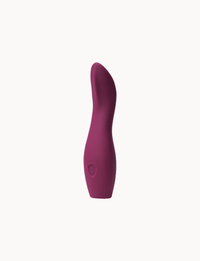If you’re like most of us, you’ve been challenged in one way or another by your intimate relationships. Maybe you’ve experienced trauma, low self-esteem, sexual dysfunction, painful sex, mismatched desire, cultural sexual shame, or simply felt limits to your own pleasure.
Talk therapy is a wonderful way to work on these issues, but when it comes to exploring and healing your sexual self, sometimes we need a holistic, wholing approach. This is where Somatic Sex Education comes in.
Somatic sex education is a trauma-informed, body-based (aka somatic) sex therapy. Educators offer experiences and experiments to awaken and nurture the sensual self, using breath, movement, sound and one-way touch as tools for greater embodiment. According to
The Somatic Sex Educators Association (of which I am part), this can include things like “coaching in breath, movement, body awareness, boundary-setting, communication, anatomy, sensate focus, massage, erotic trance and other body-based teaching about sex,” as well as “genital and anal touch for education, healing, and pleasure.”
Somatic sex educators do not remove their clothes and only offer one-way touch—i.e. the client can’t touch us, but we can touch them—which allows the client to focus solely on themselves and their unfolding.
Whereas traditional therapy might use discussion of emotions and past events to explore a concern, somatic sex education expands the inquiry of self into what is happening below the head. It’s about what can we notice in the body and the nervous system as we talk about this trauma, experience this relational exercise, practice this breath, this touch. Sensations are the language of the flesh.
Somatic sex educators offer a counter-normative lens of how we can reclaim full-body pleasure.
Somatic sex education evolved out of Sexological Bodywork, which has been a certified profession recognized by the state of California since 2003. Founded by Joseph Kramer, it grew out of his work with
The Body Electric School beginning in 1984. Trainings have since spread beyond California to
Australia,
Canada, and across Europe with professional organizations (such as the SSEA and the ACSB,
Association of Certified Sexological Bodyworkers) offering continuing education, development, and supervision to Certified Somatic Sex Educators.
How Do Sessions Begin?
Each somatic sex educator has their own unique way of practicing, and somatic sex education is far from a cookie-cutter approach. But I’ll give a sense of how I work with clients, or as I like to call them, co-creators. Before our process begins, there is an invitation to state their deepest intentions in writing—basically, “What do you want?” This also helps me guide our work, from the view of expansion, not “fixing.” While my client may want to be able to orgasm with their partner, somatic sex educators offer a counter-normative lens of how we reclaim full-body pleasure.
And while I do act as a guide, I also offer
explicit permission for each client to take care of themselves and ask for what they need at any moment. We practice this immediately by identifying where they would feel most comfortable in the room. This can make many people uncomfortable and they default to, “Oh, well, where would you like me to be?” There is no “therapist” chair and “client” couch. I have had many folks, when they really lean into this inquiry, decide that they want to be on the floor with me. Or that they need an extra pillow. What a beautiful moment! The offering is to first learn how to care for oneself in any environment.
What Happens During Sessions?
For most clients, I like to offer a body scan meditation as a foundational practice which assists developing greater interior awareness. In other words, I guide the client in noticing the entire body in terms of sensation, rather than emotion: tingling, contraction, and warmth rather than, say, anxiety or joy. Then we see if they can take their breath deeper into the pelvis and genitals. What does that feel like? Are there other places that need more breath? The goal is not to feel relaxed (even though that may occur), but just to notice and tune in.
In my experience of working with folks with a range of sexual concerns from trauma to simply wanting to access more pleasure, I’ve noticed three general areas of difficulty:
- Knowing what kind of touch one desires
- Asking for touch
- Receiving touch
There may be a challenge in all three areas, or just one. I usually begin with offering touch exercises from
Betty Martin’s Wheel of Consent, which asks: Who is doing what, and who is it for? This is very different from other bodywork in that it is client-guided. I never touch a client because I think it is something they need.
They are the initiators of all the touch they receive.
To receive touch fully is to also trust that the giver will take care of themselves.
When I ask “How would you like me to touch you?” it can be intimidating—sometimes people freeze and draw a blank, which is completely normal. This is where we might come back to noticing what’s happening in the body to help regulate the nervous system or see if the body will speak to a desire, by giving time and permission to feel into the inquiry. Sometimes people laugh, cry or anything in between; not many people are used to being asked how they would like to be touched.
I may offer choices: “Would you like me hold your hand or massage your shoulder?” They could say neither, which is so very welcome! If they say “Massage my shoulder.” we acknowledge that checking in and tending to it during the touch—“Is this still a yes?”— is a way of tracking the development of their embodied choice. I’ll also ask questions like, “Would you like less or more pressure, faster or slower?” Asking, “Is this okay?” generally does not foster the receiver’s deepest tuning into what they desire.
In asking for touch, one may feel limited by cultural conditioning or longstanding communication patterns. By offering a variety of self-regulation tools and a safe space to explore, new neural pathways can be developed and folks can find their voice as we navigate this vulnerable terrain of asking for what one really wants. Somatic sex education is not about enduring but about really going for what would feel good.
Receiving touch sometimes is the trickiest. The invitation is to orient continuously toward “What would feel better?” The goal is to be present with one’s experience, to really allow it in, to feel the pleasure of touch in its fullness. This can be a challenge; we might worry, “Are they bored? Are they getting tired?” To receive touch fully is to also trust that the giver will take care of themselves. Again, I model this by paying attention to my own comfort and boundaries. I often shift around or use a different hand placement until I’m comfortable.
As folks grow in their practice and competency of knowing, asking, and receiving over a series of sessions, there is a positive feedback loop which fosters more empowered choice and voice. For many, creating a pleasurable experience for oneself is a first.
It is the exploration of our sexual challenges that offer freedom from dead, worn-out patterns in all areas of our lives, which limit our erotic pleasure and full self-expression of body, mind and spirit. The experiential opportunities of somatic sex education allow us to integrate our somatic learning for greater personal and collective healing—fostering awakening through our relationship with self, other and the world.




















































